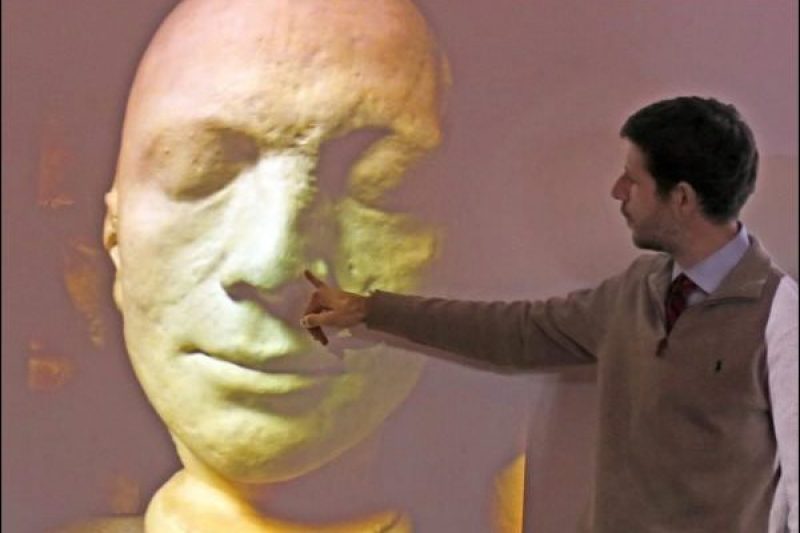Revolutionary Maximilien de Robespierre – guillotined in July 1794 – has only now been diagnosed as suffering from sarcoidosis; a skin tumour that would have almost certainly killed him had he not been despatched by the secondary wave of the French Revolution
The face of Robespierre got a 3-D reconsturction based on his death mask from law clerk Philippe Charlier, who has put forward the thesis that the famous revolutionary – nicknamed “l’incourruptible” (the incorruptible) – was suffering from smallpox and sarcoidosis.
The cause of his death 219 years ago is not in any doubt, having suffered a definitive decapitation on the 28th of July 1794. But if he hadn’t been sent to the Guillotine at the age of 36, Robespierre would probably not have lived much longer. Philippe Charlier of the medical and legal/medical anthropological laboratory at the Versailles-Saint-Quentin University has revealed that, after suffering from smallpox, the incorruptible was then probably hit by sarcoid tumour.
In order to put his thesis to the test, Dr Charlier – who also reconstructed the face of Henry IV – consulted witness accounts of Robespierre’s contemporaries but he also carefully examined the two death masks of the revolutionary – particularly the one that was cast for the famous Madame Tussaud. From these plaster cast, the French law clerk reconstituted the face of Robespierre in 3D. His face was marked by numerous lesions that are consistent with scars from smallpox.
Moreover, several medical symptoms and indicators were described by his contemporaries: poor sight, nosebleeds (“his pillow was covered in blood every night”), jaundice, asthenia (loss of strength), recurrent leg ulcers and a skin disease which affected the face with smallpox scars. All these elements of the Robespierre medical file led Dr Philippe Charlier to one diagnosis:
“He presents virtually all the indications of a diffuse sarcoidisis: an attack on the eyes and skin, with symptoms both on the legs and on the face, as well as on the respiratory mucus.”
The condition is also known as Besnier-Boeck-Schaumann Disease and is an inflammation of undetermined cause, which normally affects the lungs, but which can affect any other organ in the body. It’s normally not fatal in itself and cures itself spontaneously in 80% of cases. With the remaining 20%, it normally provokes dangerous respiratory complications that require careful diagnosis and regular monitoring. It’s safe to assume that Robespierre would not have received either as the disease was unknown at the time and wasn’t first officially diagnosed until 80 years after his death.
The author of this work – which was published in The Lancet – points out that he doesn’t know what treatment was given to Robespierre by his personal physician Joseph Souberbielle, but it seems that he was on a diet that was rich in vitamins and that he ate a lot of fruit – most notably oranges – and that he also received regular bleedings.




 Tootlafrance is Ireland’s fresh new eyes on France, bringing you the latest news, exclusive celebrity interviews, political analysis, cultural events, property news and, of course, travel features written by top Irish journalists.
Tootlafrance is Ireland’s fresh new eyes on France, bringing you the latest news, exclusive celebrity interviews, political analysis, cultural events, property news and, of course, travel features written by top Irish journalists.